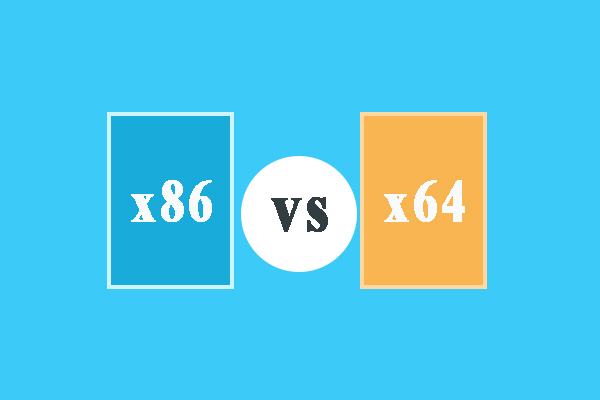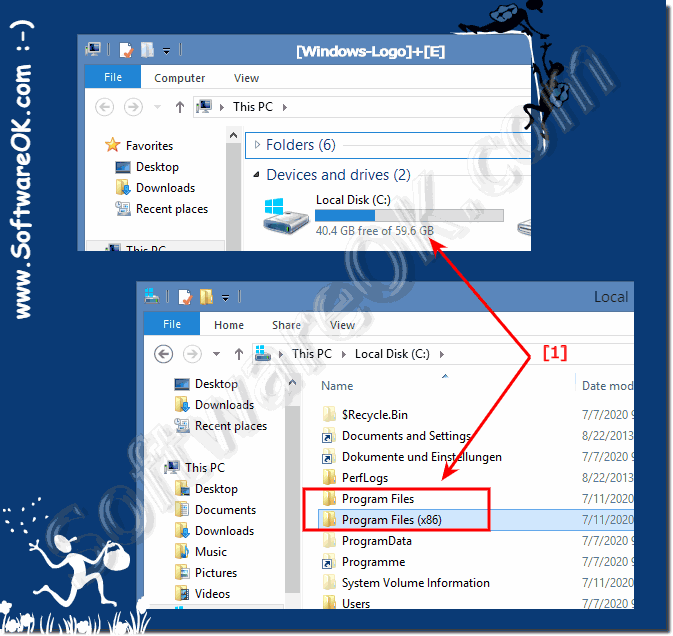
CISC processors offer combo-instructions (previous example being STOSB) that handle these common instruction patterns super-efficiently.
#Is windows 10 64 or 86 code#
Although almost all code can be represented by the basic instructions in RISC, certain patterns of instructions are common - for instance, “write this byte to memory then look at the immediately following byte”. X86/圆4 processors are CISC, or ‘Complex Instruction Set Computing’. ARM processors only offer these basic instructions. Well, most code only requires a few instructions - read/write memory, do arithmetic, jump, boolean logic, not much more. You may remember that the instruction set refers to the set of commands that the processor can execute. RISC stands for ‘Reduced Instruction Set Computing’, and, befitting an acronym that’s part of your entire brand name, it’s what makes ARM so low-power. Well, it’s because of an inherent difference between the processors. See, “ARM” stands for “Advanced RISC Machine”. Atom processors still can consume 2x the electricity of an ARM processor, even at the same processor count/clock speed. Intel’s doing that with the Atom processors, which give up processing power, 圆4 support, and high-speed computing features like SSE in return for super-reduced power consumption.īUT. But there’s an easy way for them to stay relevant - make an x86/圆4 processor that’s low-power enough to place in tablets. X86/圆4 processor manufacturers are potentially the most harmed by the rise of tablets. But Microsoft sees everyone moving to tablets, and it doesn’t want to lose all its future revenue, so it entered the mobile arena with Windows RT and the Surface. Windows has always been a desktop-only operating system, so it’s only been available for x86/圆4 processors.
#Is windows 10 64 or 86 full#
But tablets have USB ports, full web browsers, and word processing and photo editing apps, which means ARM-based portables have become direct challengers to x86/圆4-based desktops. Tablets have to be small and light, which means tiny batteries, which means ARM processors. But in the past few years, the market’s gotten all hot and bothered for tablets that are bigger and more powerful than phones, but simpler than laptops - like the iPad or Kindle.

Since the 90s, these architectures have existed in parallel worlds: ARM for phones and small PDAs, x86/圆4 for desktops and big laptops. The two processor architectures are mutually exclusive: a program that’s built for x86/圆4 can’t run on ARM under any circumstances, and vice versa.
#Is windows 10 64 or 86 android#
Mobile iOS and Android operating systems run on ARM. All versions of Windows run on x86/圆4.ĪRM processors: They’re weak but low-power processors for smartphones and other devices that aren’t plugged into the wall. So, they’re used in desktop computers that can plug into the wall. X86/圆4 processors: They’re fast and powerful, but they require a lot of electricity. But why does x86/圆4 vs ARM matter? Why does each processor require different versions of Windows? Let’s drill down. Windows RT can only run on ARM processors.Ĭool.

Windows 8 can only run on x86/圆4 processors. They’re, like, almost the same, but also really different? It’s confusing.

You may have heard about Windows RT vs Windows 8.


 0 kommentar(er)
0 kommentar(er)
